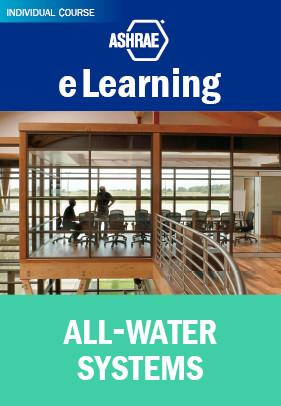All-Water Systems (I-P), 3.0 PDHs (AIA)
 |
This course presents the three major categories all-water systems, based upon piping arrangements. (I-P), 3.0 PDHs. AIA approved. Training Level: Essentials Level I Non-Member Price: $60.99 |
Details
This course presents the three major categories—based upon piping arrangements—of all-water systems. Further, it addresses the applications, advantages, and disadvantages of each of these categories. It also covers the methods of providing ventilation in an all-water system. The course also includes a case study to assist with the understanding of the practical application of this system.
Upon completion of this course, you will be able to:
- Describe: Key attributes on the basis of which all-water systems are selected as a project solution; Basic two-pipe system and explain its zoning, piping arrangement, and controls; Functioning of a two-pipe system with supplemental heating and state its advantages; Consequences of electric heating being economically justifiable throughout the year; Functioning of three-pipe systems; Relation between pump and piping in a variable-speed pump operation; Type of piping networks that suits variable-speed pumping; Following all-water terminals: fan-coil units, unit ventilators, and valance units; Four-pipe systems.
- List the: advantages and disadvantages of the all-water systems; safeguards to the cleanliness of all-water systems; pump laws for centrifugal pumps; Identify the types of building that suit all-water systems and provide the reasons for it; Classify the all-water system into three basic types. Compare the: Different arrangements for controlling humidity in a basic two-pipe system; All-water fan-coil systems with other HVAC systems. State the: Best practice for controlling humidity in a basic two-pipe system; Best alternative for fan, water flow, noise, and temperature controls in a basic two-pipe system, Design changes that have resulted from the advantages of the four-pipe systems.
- Discuss the: Benefit and disadvantages of three-pipe systems; Most important issues to the design of water distribution networks for all-water systems; Direct return and reverse return piping system. Explain the: Issues that influence water flow balance in a water distribution network; Obstruction to control of system pressure differential and its preventive measures; Measures by which designers have achieved variable-volume pumping; Precautions associated with variable-speed pumping; Shortcomings of ventilation in all-water systems; Design sequence beginning from preliminary consideration of systems for a specific project to the final design process.